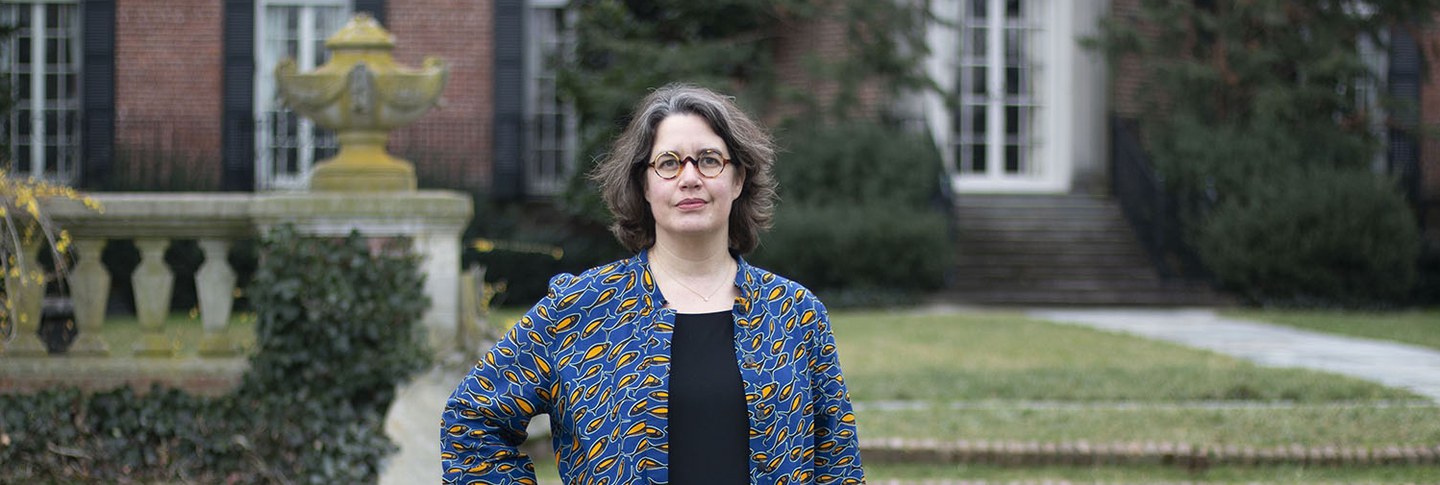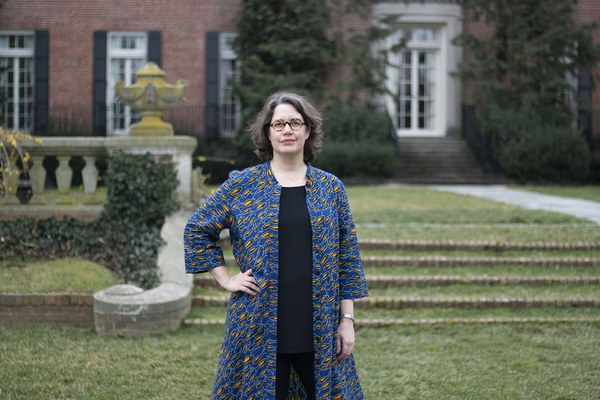Erika Milam, professor of history at Princeton University, was a spring 2020 fellow in Garden and Landscape Studies. Her research report, “Slow Science: Ecological Landscapes and Their Organisms,” juxtaposed the histories of two behavioral ecology projects in Kenya.
Q&A with Erika Milam
What is slow science?
In science, the word slow can have negative connotations, which I am keen to avoid. Especially in the late twentieth and early twenty-first century, popular assumptions about science have centered on the idea that it is innovative and it works at a lightning pace. I find fascinating a different kind of scientific project, like those in behavioral ecology, where publications can be based on data it took decades to gather and analyze. In this way, slow science, for me, is first a register of the time and effort that goes into creating these kinds of data.
Slow science also evokes the slow food movement, offering a way of thinking about the place-based and artisanal nature of long-term data sets. The term echoes, too, both Rob Nixon’s idea of “slow violence”—that environmental damage takes place over such a long time frame that it’s difficult for humans to perceive it with our own senses—and environmental historian Christof Mauch’s idea of “slow hope.” Mauch suggests that in the face of the dire ecological transformations on the planet, what we need are stories of hope, resilience, and the capacity of individuals to make a difference; otherwise, he believes, ecological despair could lead to political paralysis.
As a term, “slow” draws on all these rich connotations: the pace of the production of science, the place-based nature of it, and the deep ties to an environmental nexus of place and time. My project explores a particular kind of slow science, behavioral ecology, and the scientists who have devoted careers to understanding particular ecological landscapes and the social lives of the animals who live there. These scientists return to the same place season after season to study the same animal population, and over decades have amassed a remarkable record of how the animal populations they study have changed and adapted.
Tell me about the hyena and baboon projects you discussed.
I explored two successful projects in the talk, both based in Kenya and funded by American scientific organizations. The Michigan State University Hyena Project, under the watchful eye of Kay Holecamp, dates back to the 1980s, and the Amboseli Baboon Project began even earlier, in the 1960s. The Amboseli Baboon Project was unusual for forging deep ties to the local community in southeastern Kenya early in the project’s lifespan, and is now run collaboratively by Jeanne Altmann, Susan Alberts, Jenny Tung, and Elizabeth Archie.
We have a tendency to think of animal behavior research in the wild as being about certain animals who have interesting personalities—the chimpanzees of Gombe, lions of the Kalahari, or even the cooperatively breeding meerkats of the Kalahari popularized by the BBC’s Meerkat Manor. But most people do not feel strong affection for baboons and even fewer like hyenas. One of the things I appreciate about these projects is they’re studying animals often considered pests or dangerous predators lacking any admirable qualities. Both projects foster a deeper understanding of these species and the scientists have worked to expand public appreciation for a wider array of animal behavior than the typical charismatic megafauna that get highlighted in public conversations about conservation and biology.
Why focus on landscape in your research?
I’m interested in why scientists return to the same place for their entire careers. Landscape is one of the reasons. Landscapes are crucial to the affective connection to place scientists develop over time. In addition, the arrangements of the camp and research sites in landscapes reflect the choices scientists make about where best to study their organism. Where does the animal live relative to where the scientists sleep? What negotiations with local authorities were necessary to obtain research and building permits? Which sites are more protected from flooding, from predators, from outside disturbance? Landscapes embody a dynamic set of solutions to a host of scientific and logistical questions.
Being able to discuss this work with scholars in Garden and Landscape Studies and archaeologists in Pre-Columbian Studies was phenomenally useful to my research. Zeynep Kezer and [Resident Program Director for Garden and Landscape Studies] Thaïsa Way were a tremendous resource in introducing me to landscape architecture and its history. Ann Komara helped me think through the layout of the sites and how that reflects scientists’ patterns of use and prioritization. Speaking with the Plant Humanities team about integrating cultural and social history into the history of place has also been a delight. Lindi Masur and Loa Traxler were helpful in conceptualizing parallels with archaeological projects. I am grateful for the opportunity to have been a part of this vibrant intellectual community.
Julia Ostmann was 2018–2020 postgraduate writing and reporting fellow at Dumbarton Oaks. Photo by Elizabeth Muñoz Huber, 2018–2020 postgraduate digital media fellow.

